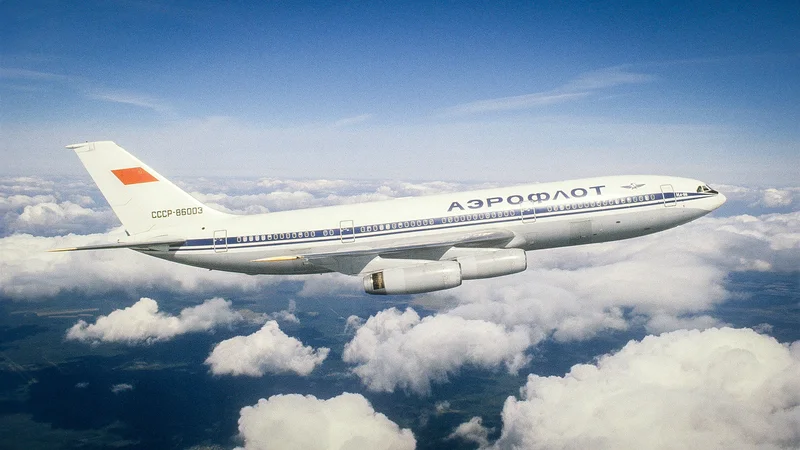Article Directory
The Caribbean is becoming a theater for a high-stakes, asymmetric geopolitical chess match. Recent events, when viewed as a series of correlated data points rather than isolated headlines, suggest a rapid and dangerous escalation between Washington and a Moscow-backed Caracas. The board is set, the pieces are moving, and the probability of a miscalculation is rising with each move.
Let’s begin with the most tangible new piece on the board: a Russian Ilyushin Il-76 cargo plane. This isn't just any aircraft. The plane, with registration RA-78765, is operated by Aviacon Zitotrans, an entity sanctioned by the U.S., Canada, and Ukraine for its direct logistical support of the Russian military. Its arrival in Caracas on a Sunday in late October wasn't a direct flight. I've analyzed dozens of flight paths for sanctioned entities, and this one's multi-stop African tour—via Armenia, Algeria, Morocco, Senegal, and Mauritania—is a classic signature of something more than just refueling. This is the playbook of an operator seeking to avoid Western airspace and potential inspections, with the added benefit of making stops in countries where Russia's Africa Corps (the rebranded Wagner Group) has a significant footprint.
The Il-76 has a cargo capacity of 50 tons. That can be munitions, it can be specialists, or it can be high-value electronic warfare equipment. While a single flight is insufficient for a major system like an S-400 battery, it’s more than enough to deliver a potent message. This is Russia making a deliberate, calculated move in America's traditional sphere of influence. It’s a direct response to Washington’s own military posturing. What specific message does a sanctioned military transport plane send? It signals that Moscow's commitment to Nicolás Maduro is not merely diplomatic; it's logistical and tangible. It raises the question of what, precisely, was in those 50 tons of cargo space. And perhaps more importantly, what might have been picked up or dropped off along that carefully curated African route?
The High-Risk, Low-Yield Covert Play
While Russia projects methodical, state-backed power, the American strategy appears to be a volatile mix of overwhelming force and oddly personal, high-risk covert actions. The recent U.S. military buildup is unambiguous: an aircraft carrier strike group, B-1B bomber flyovers, and a series of lethal strikes on suspected narco-vessels that have killed over 50 people—to be more exact, 57 according to reports. This is the overt application of pressure, designed to intimidate and signal resolve.

But behind this iron curtain of military might lies a far murkier, and frankly less successful, effort. The story of how the U.S. attempted to lure Maduro’s pilot into betraying the Venezuelan leader reads like a script from a Cold War thriller that was rejected for being too improbable. The clandestine meeting in a Dominican airport hangar, the offer of immense wealth, the 16-month-long follow-up via encrypted text messages—it all points to an operation that was more speculative than strategic.
The play was audacious: convince the pilot to divert Maduro's plane to a location where he could be apprehended on U.S. narco-terrorism charges (with a recently doubled $50 million bounty). The plan’s failure is the most telling data point. Villegas ultimately rebuffed the offer, calling Lopez a "coward" and declaring, "We Venezuelans are cut from a different cloth. The last thing we are is traitors." He was later paraded on state television, fist raised, as a national hero. The attempt to rattle Maduro by publicizing the approach through a social media post by a former U.S. official only seemed to backfire, allowing the regime to spin it into a propaganda victory.
This entire episode is a fascinating case study in operational risk. The potential reward was astronomical—the capture of a head of state. But the probability of success was clearly misjudged. If a plan this direct and well-funded failed so spectacularly, what does that reveal about the cohesion of Maduro's inner circle? Does Washington's intelligence apparatus have a fundamental blind spot when it comes to the loyalty structures—built on a mix of ideology, fear, and patronage—that keep the Caracas regime intact? It suggests a critical misreading of the human element in the geopolitical equation.
The whole situation is like a poker game where the stakes are getting uncomfortably high. Moscow slides a 50-ton stack of chips onto the table with its cargo plane. Washington sees that bet and raises with an aircraft carrier, while simultaneously trying to peek at the other player's cards with a clumsy covert op. Each move is a signal, a bluff, or a genuine escalation, and the line between them is becoming dangerously blurred. The introduction of B-1B bombers and reports that Venezuela claims CIA 'false flag' attack foiled, as US deploys bombers only add more volatility. We are moving beyond signaling and into a phase where a single misinterpretation could trigger a kinetic response.
A Miscalculation in Probabilities
My analysis suggests that both Washington and Moscow are operating on flawed assumptions, creating a feedback loop of escalation. The U.S. appears to be overestimating the fragility of the Maduro regime, believing that enough pressure, whether through military force or covert enticements, will cause it to fracture. The failed attempt to flip the pilot is a stark indicator that this is not the case. Conversely, Russia is testing American resolve in the Caribbean, likely calculating that the U.S. is too distracted by other global conflicts to respond decisively. This is a profound misreading of the political dynamics in Washington. The result is a dangerous convergence where both sides believe they have the upper hand, dramatically increasing the probability of an unintended conflict that neither side can afford. The data points don't lie: the trajectory is one of accelerating risk.
